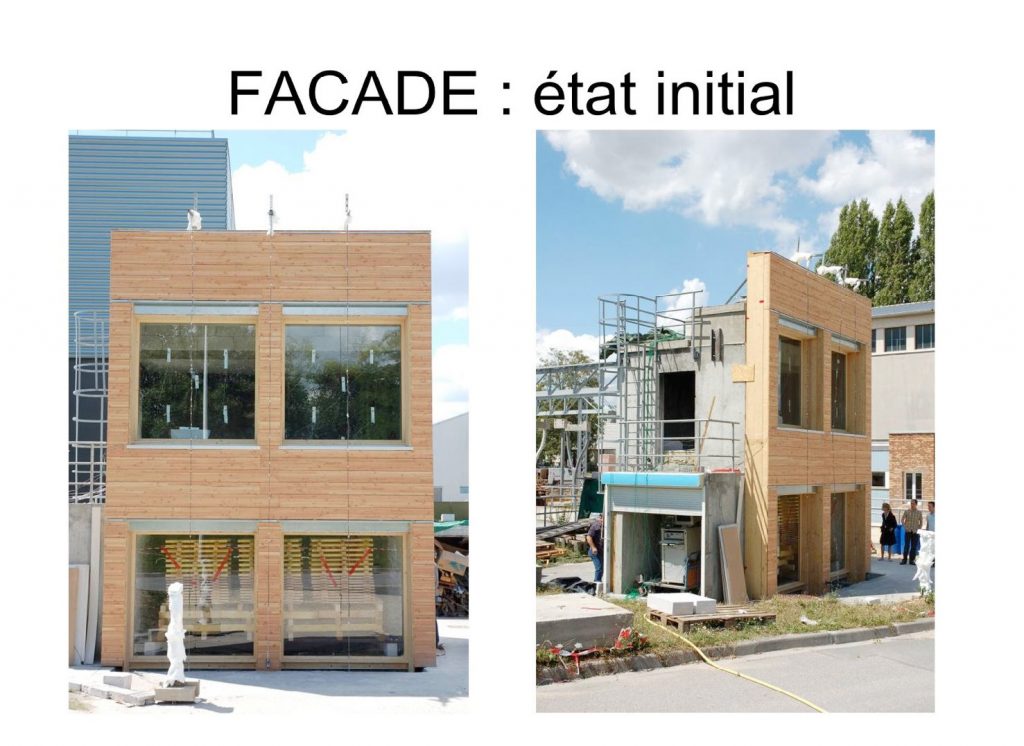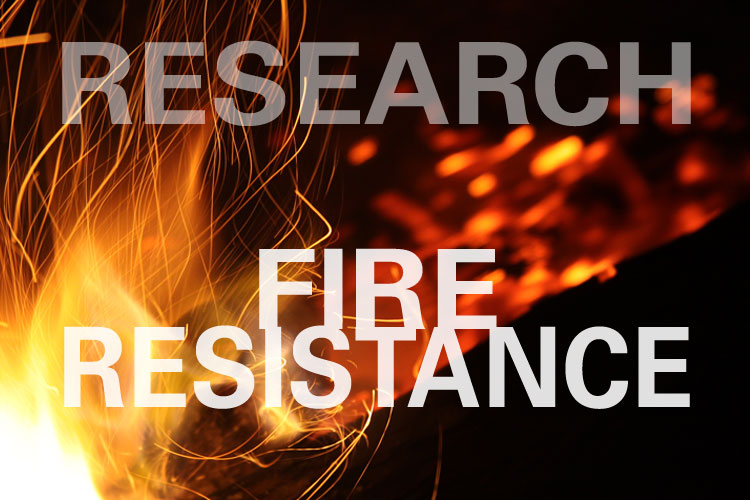EN: Research test, at L.E.P.I.R. 2, of a facade integrating wood and straw materials in its constitution.
FR: Essai de recherche, au L.E.P.I.R. 2, d’une façade intégrant dans sa constitution les matériaux bois et paille.

INTERPRETATION OF THE RESULTS
The ignition observed at level N+2 from the 21st minute of the test is due to the loading of the cladding and spandrel facing by hot gases resulting mainly from the charring of the central overmantel at levels N and N+1. The hot gases were channelled into the air gap formed between the cladding and the exterior facing over the height of the central overmantel. This observation is confirmed by the presence of stinging flames at the top of the N+1 central overmantel at the 12th minute.
Ensuring an additional overlap of the air space will delay the ignition of the the spandrel of level N+2. The overlap can be achieved by ensuring the continuity of the steel baffle plate at the top of the The overlap can be achieved by ensuring the continuity of the steel deflector sheet, located at the head of the spandrels, along the entire length of the façade, or by using horizontal horizontal hardwood profiles with a minimum thickness of 60 mm.
It can be noted that reducing the thickness of the air space is a step in the right direction, but is not sufficient to solve the problem. to solve the problem.
Concerning the non-compliance with the requirement of the decree of 10 September 1970 in relation to the ignition of the spandrel on level N+2, we consider that this is not detrimental to the the building facade that is the subject of this study, given that the required fire resistance time is limited to 30 minutes. required is limited to 30 minutes. In addition, the building concerned by this façade is is an R+2.
During the test we observed a rapid ignition (at 01 minute) of the 3-ply laminated panels of 26 millimetres thickness forming the cladding of the embrasure. Although in the sense of the of 10 September 1970, this phenomenon does not downgrade the façade, we consider it wise to replace the 3-ply material replace the 3-ply material with panels that are more difficult to ignite. The panels with a higher density than the panels used, could be less sensitive to rapid and delayed less susceptible to rapid ignition and delay the fall of the N+1 level glazing.
The holes and charring visible in the photographs on pages 63/65 and 65/65 result from the successive reignitions that occurred after the test was stopped (smouldering fire in the straw bales). straw bales). This shows that following a fire situation, the extinguishing phase must be This makes it possible to note that following a fire situation, the extinguishing phase must be particularly careful.
Author: CSTB



